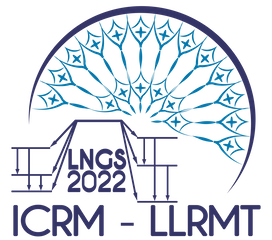Speaker
Description
In the Laboratory for LSC, we have been measuring tritium in environmental waters since 2009 using the method of electrolytic enrichment of tritium, accredited according to ISO 17025. Each electrolytic set contains a maximum of 15 electrolyzed samples with unknown activity, 5 control - calibration electrolyzed samples and three control non - electrolyzed samples. All measurement data and parameters are collected in control QA / QC charts. In the period of 383 electrolyzes, we collected and edited more than 140 data per each electrolysis, which we used, among other things, to upgrade the analytical process and improve the final results.
For electrolysis we use a device made at the AGH University of Science and Technology, Krakow, with 20 half-litre cells. For the calculation, we follow the papers (Gröning & Rozanski, 2003) and (Rozanski & Gröning, 2004). At the initial implementation of the electrolytic protocol (Q = 1400 Ah) and counting time up to 1000 min on Quantulus 1220, the typical values for the detection limit were around 0.096 Bq/kg according to ISO 11929, for enrichment factors Z = 18.2 ± 1.3 and for enrichment parameters P = 0.889 ± 0.012. We were not satisfied with the scattering of the final masses (~9 %) and consequently the Zs and Ps, so we decided to optimize the whole process.
By measuring the temperatures at typical places in the electrolytic cooling system, we obtained data for modelling the cooling of cells and air currents in the cooling device. Considering the optimal model, we upgraded the electrolytic process by installing spoilers and redirecting fans. This reduced the scatter of the final masses in the cells by roughly 60 %, which allowed us to increase the charge. We extended the duration of electrolysis and thus reduced the currents and heating of the samples during electrolysis. Scatter of Z with the same electrolytical protocol is now around 0.9 (33 % improvement), scatter of P has not changed. At the highest charges (Qmax = 1422.41 Ah) we then achieved Z = 33.4 ± 1.5 and P = 0.952 ± 0.007.
In the new modified calculation of specific activity, we consider the cpm of electrolyzed dead water, the individual mass of all samples in each measurands, we updated the uncertainty contributions shown from the control charts and added Bayesian statistics (ISO 11929) for calculation of the best estimate of specific activity and all characteristic limits. After the upgrades of the electrolytic process and calculations, we now reachenter code here the detection limits of around 0.035 Bq/kg. Uncertainties are now roughly 10 % lower.
In this paper, we will show the statistically processed data of the original and new electrolytic runs, explain the optimization process, show which parameters and in what way they affect the quality of the results and support the findings with experimental data. We will explain the changes in the modified calculation and how they affect the final improved result and show new, lower characteristic limits.

